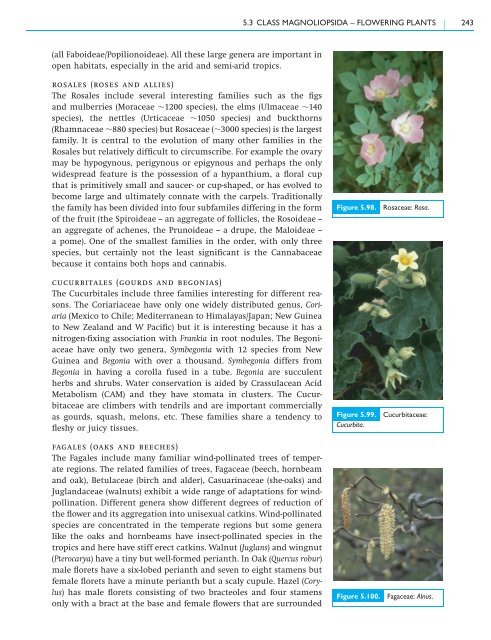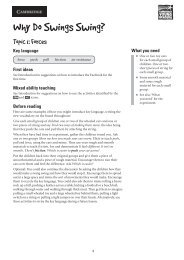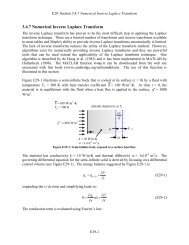5.3 Class Magnoliopsida – flowering plants - Cambridge University ...
5.3 Class Magnoliopsida – flowering plants - Cambridge University ...
5.3 Class Magnoliopsida – flowering plants - Cambridge University ...
You also want an ePaper? Increase the reach of your titles
YUMPU automatically turns print PDFs into web optimized ePapers that Google loves.
(all Faboideae/Popilionoideae). All these large genera are important in<br />
open habitats, especially in the arid and semi-arid tropics.<br />
rosales (roses and allies)<br />
The Rosales include several interesting families such as the figs<br />
and mulberries (Moraceae ∼1200 species), the elms (Ulmaceae ∼140<br />
species), the nettles (Urticaceae ∼1050 species) and buckthorns<br />
(Rhamnaceae ∼880 species) but Rosaceae (∼3000 species) is the largest<br />
family. It is central to the evolution of many other families in the<br />
Rosales but relatively difficult to circumscribe. For example the ovary<br />
may be hypogynous, perigynous or epigynous and perhaps the only<br />
widespread feature is the possession of a hypanthium, a floral cup<br />
that is primitively small and saucer- or cup-shaped, or has evolved to<br />
become large and ultimately connate with the carpels. Traditionally<br />
the family has been divided into four subfamiles differing in the form<br />
of the fruit (the Spiroideae -- an aggregate of follicles, the Rosoideae -an<br />
aggregate of achenes, the Prunoideae -- a drupe, the Maloideae -a<br />
pome). One of the smallest families in the order, with only three<br />
species, but certainly not the least significant is the Cannabaceae<br />
because it contains both hops and cannabis.<br />
cucurbitales (gourds and begonias)<br />
The Cucurbitales include three families interesting for different reasons.<br />
The Coriariaceae have only one widely distributed genus, Coriaria<br />
(Mexico to Chile; Mediterranean to Himalayas/Japan; New Guinea<br />
to New Zealand and W Pacific) but it is interesting because it has a<br />
nitrogen-fixing association with Frankia in root nodules. The Begoniaceae<br />
have only two genera, Symbegonia with 12 species from New<br />
Guinea and Begonia with over a thousand. Symbegonia differs from<br />
Begonia in having a corolla fused in a tube. Begonia are succulent<br />
herbs and shrubs. Water conservation is aided by Crassulacean Acid<br />
Metabolism (CAM) and they have stomata in clusters. The Cucurbitaceae<br />
are climbers with tendrils and are important commercially<br />
as gourds, squash, melons, etc. These families share a tendency to<br />
fleshy or juicy tissues.<br />
fagales (oaks and beeches)<br />
The Fagales include many familiar wind-pollinated trees of temperate<br />
regions. The related families of trees, Fagaceae (beech, hornbeam<br />
and oak), Betulaceae (birch and alder), Casuarinaceae (she-oaks) and<br />
Juglandaceae (walnuts) exhibit a wide range of adaptations for windpollination.<br />
Different genera show different degrees of reduction of<br />
the flower and its aggregation into unisexual catkins. Wind-pollinated<br />
species are concentrated in the temperate regions but some genera<br />
like the oaks and hornbeams have insect-pollinated species in the<br />
tropics and here have stiff erect catkins. Walnut (Juglans) and wingnut<br />
(Pterocarya) have a tiny but well-formed perianth. In Oak (Quercus robur)<br />
male florets have a six-lobed perianth and seven to eight stamens but<br />
female florets have a minute perianth but a scaly cupule. Hazel (Corylus)<br />
has male florets consisting of two bracteoles and four stamens<br />
only with a bract at the base and female flowers that are surrounded<br />
<strong>5.3</strong> CLASS MAGNOLIOPSIDA <strong>–</strong> FLOWERING PLANTS 243<br />
Figure 5.98. Rosaceae: Rosa.<br />
Figure 5.99. Cucurbitaceae:<br />
Cucurbita.<br />
Figure 5.100. Fagaceae: Alnus.
















